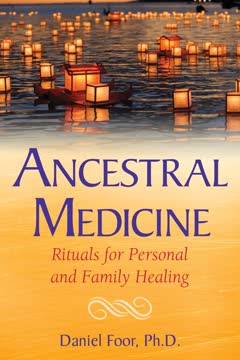Key Takeaways
1. The Ancestors: More Than Just the Deceased
Ancestors are a biological and historical reality for each of us, irrespective of our religious, racial, or cultural backgrounds.
Beyond Lineage. Ancestors encompass not only blood relatives but also those who inspire us, including adoptive family, friends, and cultural figures. This broader definition acknowledges the diverse influences shaping our lives. The ancestors are a biological and historical reality for everyone, regardless of background. They are reflected in our physical traits, health, and predispositions, speaking through DNA.
Continuity of Consciousness. Most cultures believe in some form of afterlife or continued consciousness after death. This belief is fundamental to ancestor reverence, suggesting that the dead are not truly gone but exist in a different state of being. This continuity allows for ongoing relationships and influence between the living and the dead.
Real and Worthy. The book assumes that some aspect of what we are continues after death and that the ancestors are therefore "real" and worthy of our consideration and respect. This perspective encourages readers to explore their relationships with ancestors, regardless of their personal beliefs or spiritual paths. The ancestors are seen as a source of relationship and support, offering guidance and wisdom.
2. Benefits of Consciously Connecting with Ancestors
From personal experience and my work as a psychotherapist and ancestor-focused ceremonialist, I have found relating to ancestors to be healing and beneficial on at least three levels: personal, familial, and cultural.
Personal Well-being. Consciously connecting with ancestors can improve physical and psychological health. Research shows that reflecting on ancestors boosts intellectual performance and confidence. Awareness of family predispositions encourages healthier life choices. Forgiveness, a common component of ancestral work, promotes greater physical and mental health.
Familial Healing. Ancestor work can heal intergenerational patterns of family dysfunction. By engaging with spiritually vibrant ancestors, individuals can understand, contain, and transform patterns of pain and abuse. This engagement can create a ripple effect, leading to reconciliation among living family members and the restoration of overlooked blessings.
Cultural Transformation. Ancestors are powerful allies in transforming historical trauma related to race, gender, religion, and war. Epigenetics shows that ancestral pain can endure through generations. Reconciling with ancestors who experienced persecution or enacted violence mends cracks in the larger spirit of humanity, moving beyond victim/victimizer consciousness.
3. Navigating the Unseen: Discernment is Key
In traditional societies, ancestors are venerated and considered sources of wisdom even after they have left their physical bodies.
Not All Are Equal. Not all of the dead are equally well in spirit. Some are wise and loving, while others are troubled and potentially harmful. This requires discernment when engaging with ancestors. It's crucial to distinguish between healthy ancestors and troubled ghosts.
Communication is Possible. The living and the dead can communicate through dreams, synchronicities, and intentional practices like prayer and ritual. This communication can be helpful or harmful, conscious or unconscious. It's important to refine the accuracy of communication over time.
Mutual Influence. The living and the dead can strongly affect one another. Healthy ancestors can bestow blessings of health, prosperity, and rootedness. The living can honor ancestors through offerings, remembrance, and healing intergenerational challenges. The troubled dead can cause illness, addiction, and other problems.
4. Ritual as a Bridge: Intentional Connection
Ancestor-focused rituals are one way to relate more consciously to the dead and to advocate for our interests and for the well-being of our family and our world.
Seeking Support. Rituals can help seek and maintain ancestral support, bringing blessings, healing, and guidance. These rituals may occur during holidays or times of crisis. Tending to the relationship in an ongoing way is a common reason for calling upon them.
Assisting the Troubled. Rituals can assist the troubled dead, helping them transition to the ancestral realm. This may involve house blessings, exorcisms, or communal ceremonies. The goal is to enable the deceased to make the transition.
Honoring Lineage and Place. Rituals can honor ancestors of lineage and place, connecting with spiritual traditions and the land. This may involve calling upon those who lived and died in a place as a source of wisdom. Rituals may also invite local ancestors to participate in acts of remedy and repair.
5. Genealogy and Family Research: Unearthing the Past
Genetic ancestors are no farther from you than your blood and bones.
Gathering Information. Begin by gathering information from living family members, genealogy research, and personal reflection. This includes names, dates, photographs, stories, and inherited objects. Engage the living family by asking elders about family history.
Online Resources. Use online and professional resources for genealogy research. Online databases can provide access to historical records. Be aware that accuracy can vary, so cross-reference information and include primary sources.
Visual Presentation. Compile information onto a family pedigree chart or mandala. This organization supports new associations and connections. Even with limited information, you can connect with ancestors in spirit.
6. Ancestral Guides: Allies in Healing
The loving and wise ancestors (also called ancestral guides or elevated ancestors) wish well for their living descendants, and many ancestor rituals emphasize bringing blessings, healing, and guidance from these ancestors into this dimension.
Defining Guides. Ancestral guides are spirits of blood ancestors who are willing and able to support our lives and assist the troubled dead. They are spiritually vibrant and embody love, wisdom, and service. These guides mirror our potential and responsibility to be exemplary human beings.
Contacting Guides. Use ritual to contact ancestral guides. This may involve establishing a safe ritual space, setting a clear intent, and using practices like meditation and trance work. Distinguish imagination from spirit contact by trusting your instincts and cross-checking information.
Maintaining Connection. Deepen relationships with ancestral guides through inspired speech, prayer, offerings, and communication. Consecrate an ongon or physical object to honor the connection. Pray with the ancestors for the lineage between.
7. Mending the Lineage: Reclaiming Ancestral Gifts
By ritually feeding and elevating their collective spirit, we also raise our own awareness and vibration.
Assessing the Lineage. Assess the health of the ancestral line by identifying gifts and burdens transmitted across generations. Determine sources of spiritual power feeding the lineage. Identify who among the recent dead has yet to fully join the elevated ancestors.
Transforming Burdens. Transform inherited pain and dysfunction by embodying blessings and gifts. Mend collective wounds as they live in your family and communities. This includes mending collective wounds as they live in your family and communities and inside your own body and soul.
Indicators of Health. Signs of a healthy ancestral lineage include being anchored in ancient mythic time, having blessings predominate over burdens, maintaining relationships with affinity spirits, and having most ancestors elevated in spirit.
8. Assisting the Troubled Dead: A Path to Peace
The family we knew during their lives on Earth are also the ancestors most likely to affect us in the present.
Emotional Healing. Address unresolved emotional pain from past relationships. This may involve forgiveness, reconciliation, and establishing healthy boundaries. Unhealed emotional pain can keep a living person from relating to supportive ancestral spirits.
Psychopomp Work. Assist the troubled dead to transition to the ancestral realm. This may involve guiding them through a doorway or across a bridge. The goal is to help them complete their journey and join the loving ancestors.
Elevation Rituals. Elevate the spirit of the deceased through prayer, offerings, and positive energy. This may involve visualizing them surrounded by healing light and receiving support from their ancestors. The intent is to help them achieve a state of peace and well-being.
9. Honoring Ancestors of Place: Rootedness and Belonging
To many California Indians, a gathering site is consecrated by gatherings carried on over long periods.
Connecting to the Land. Honor ancestors of place by understanding the human and ecological history of the land. Learn about traditional ways of life and the relationship between the ancestors and the natural world. Visit cemeteries and other sacred sites.
Respectful Engagement. When engaging with ancestors of place, follow indigenous protocols and seek permission from local communities. Acknowledge the spirits of earlier human inhabitants. Honor the land and its resources.
Transforming Disturbance. Identify areas of ancestral vitality and disturbance. Tend to troubled locations by offering prayers and performing rituals. Support local human and other-than-human neighbors.
10. Affinity Ancestors: Expanding the Circle
To be an ancestor is to continue relating.
Beloved Friends. Honor deceased friends who have touched your life. Ensure they are well in spirit and have joined their own ancestors. Maintain a healthy balance in the relationship.
Teachers and Heroes. Acknowledge inspiring mentors, teachers, and cultural heroes. Offer prayers and gratitude for their influence. Embody their teachings and values in your life.
Spiritual Lineage. Connect with ancestors of spiritual tradition. Draw inspiration from their wisdom and practices. Integrate their teachings into your spiritual path.
11. Death as a Transition: Preparing for the Inevitable
To be an ancestor is to continue relating.
Practical Preparations. Tend to personal affairs and relationships. Create a will and plan for final arrangements. This brings peace of mind to you and your family.
Emotional and Spiritual Preparation. Seek emotional healing and forgiveness. Reconcile with loved ones. Engage in practices that bring clarity and presence.
The Final Moments. Approach death with courage and open-heartedness. Call upon supportive forces from the unseen realms. Embrace the transition as a new beginning.
12. The Journey Continues: Living in Harmony with Ancestors
The world is brought back into balance through the renewal of ceremonial life that confirms that continuity.
Ongoing Relationship. Maintain a conscious and reciprocal relationship with ancestors. Seek their guidance and support in daily life. Honor them through prayer, offerings, and ritual.
Embodying Ancestral Blessings. Transform inherited pain and dysfunction. Embody the blessings and gifts you inherit from your people. Live as a good and ethical person on Earth.
Harmonizing Lineages. Integrate your work with different types of ancestors. Harmonize your family, place, and affinity ancestors. Create a balanced and meaningful life.
Last updated:
FAQ
1. What is Ancestral Medicine: Rituals for Personal and Family Healing by Daniel Foor about?
- Comprehensive ancestor work guide: The book explores ancestor reverence, lineage repair, and rituals for personal and family healing, drawing from indigenous, psychological, and spiritual traditions.
- Three-part structure: It covers foundational concepts, practical healing with lineage and family ancestors, and honoring ancestors of place and affinity.
- Accessible for all backgrounds: Foor presents cross-cultural practices and emphasizes that anyone, regardless of spiritual background, can engage in ancestor work.
- Practical exercises included: The book offers rituals, exercises, and reflections to help readers build conscious, healing relationships with their ancestors.
2. Why should I read Ancestral Medicine by Daniel Foor?
- Healing intergenerational trauma: The book provides tools and rituals to address family dysfunction, ancestral burdens, and inherited patterns, supporting emotional and spiritual healing.
- Bridging science and spirituality: Foor combines his background as a psychotherapist with indigenous and spiritual practices, making the material grounded and accessible.
- Empowerment and personal growth: Readers learn to reclaim cultural roots, foster forgiveness, and find meaning through ancestral connection.
- Inclusive and respectful approach: The guidance is adaptable to diverse spiritual paths and encourages working within one’s own lineage and cultural context.
3. What are the key takeaways from Ancestral Medicine by Daniel Foor?
- Lineage repair process: A five-stage cycle guides readers from family research to connecting with ancestral guides, healing lineages, and integrating blessings into living family relationships.
- Multiple types of ancestors: The book distinguishes between family, collective, place, and affinity ancestors, offering tailored practices for each.
- Practical rituals and exercises: Foor provides step-by-step guidance for rituals, visualizations, and offerings to deepen ancestral connection and healing.
- Emphasis on boundaries and discernment: The importance of safety, clear intent, and healthy boundaries is woven throughout the practices.
4. What are the best quotes from Ancestral Medicine by Daniel Foor and what do they mean?
- “Not all the dead are equally well.” This highlights the need for discernment in ancestor work, as some ancestors may require healing before they can offer support.
- “The living and the dead affect each other profoundly.” Foor emphasizes the ongoing, mutual influence between ancestors and descendants.
- “Anyone can engage with their ancestors, regardless of spiritual background.” The book’s inclusive philosophy encourages all readers to explore ancestral healing.
- “Healing the lineage uplifts both ancestors and descendants.” This underscores the transformative power of ancestral repair for families and communities.
5. What are the foundational concepts of ancestor reverence in Ancestral Medicine by Daniel Foor?
- Consciousness continues after death: Ancestors are seen as living spirits capable of communication and influence.
- Diversity among the dead: Not all ancestors are well; some are wise guides, while others may be troubled and require healing.
- Mutual influence: The living and the dead impact each other, and rituals help maintain positive, healing relationships.
- Safety and boundaries: Practitioners are encouraged to engage only with supportive ancestors and to set clear boundaries with troubled spirits.
6. How does Daniel Foor define different types of ancestors in Ancestral Medicine?
- Family and remembered ancestors: Recent relatives known by name, who may be well or in need of healing.
- Older and collective ancestors: Ancestors beyond living memory, representing the broader lineage and cultural heritage.
- Ancestors of place and affinity: Spirits connected to land, vocation, or shared values, not just bloodline.
- Lineage, individual, and collective spirits: Ancestors may appear as individuals, lineage representatives, or as part of a collective consciousness.
7. What is the five-stage lineage repair process in Ancestral Medicine by Daniel Foor?
- Gathering family information: Start with genealogy, family stories, and personal reflection to understand ancestral blessings and burdens.
- Connecting with ancestral guides: Use visualizations and rituals to meet wise, supportive ancestors who can assist in healing.
- Assessing and healing lineages: Evaluate the spiritual health of each bloodline and perform rituals to repair troubled lineages.
- Assisting recent ancestors: Help the remembered dead transition into peaceful ancestors through specific rituals and forgiveness practices.
- Grounding in living relationships: Integrate ancestral blessings into relationships with living family members for ongoing healing.
8. How does Ancestral Medicine by Daniel Foor address the “troubled dead” and their healing?
- Prevalence and impact: Foor notes that about one-third of recently deceased spirits may not transition smoothly, potentially affecting the living.
- Eight-step healing process: The book outlines a careful, stepwise approach involving ancestral support, prayers, resolving attachments, and guiding soul repair.
- Ethical and safety considerations: Strong boundaries, ancestral guidance, and sometimes professional collaboration are recommended for safety.
- Family and lineage focus: Healing troubled ancestors is seen as a sacred act of family and cultural repair.
9. What is the multiple souls concept in Ancestral Medicine by Daniel Foor and how does it shape ancestor work?
- Three-soul model: Drawing from Buryat Mongolian tradition, humans have suld (bone/body), ami (blood/breath), and suns (star/ghost) souls.
- Different ancestral types: After death, these souls relate to different kinds of ancestors—family, place, and affinity.
- Reincarnation nuances: The ami and suns souls reincarnate, while the suld does not, allowing for complex ancestral relationships.
- Practical implications: Understanding this model helps practitioners discern types of ancestral contact and tailor rituals accordingly.
10. What practical advice does Daniel Foor give for initiating contact with ancestors in Ancestral Medicine?
- Set clear ritual intent: Begin with a focused intention to connect with loving, supportive ancestors and exclude troubled spirits.
- Create sacred space: Use a quiet, clean area with simple altar items like candles, water, or incense to invite ancestral presence.
- Offerings and receptive awareness: Make heartfelt offerings and spend time in open awareness, allowing responses to arise naturally.
- Closure and grounding: End rituals with gratitude and grounding practices to ensure safety and integration.
11. How does Ancestral Medicine by Daniel Foor guide working with living family members and integrating ancestor work?
- Grounding ancestor work: The final stage of lineage repair focuses on healthy, empowered relationships with living relatives.
- Embodiment and mediumship: Practices include embodying lineage ancestors and praying for living family members.
- Harmonizing lineages: Exercises help harmonize the four primary bloodlines and extended family for collective support.
- Celebration and ongoing connection: Ritual feasts and prayers are recommended to celebrate and maintain relationships with both living and deceased family.
12. How does Ancestral Medicine by Daniel Foor address death, funerary customs, and the post-death journey?
- Preparation and reflection: The book encourages practical and emotional preparation for death, including legal affairs and relationship completions.
- Elemental symbolism: Death and funerary customs are explored through the four elements—fire, water, wind, and earth.
- Stages after death: Foor describes a three-part progression: saying goodbye, mourning, and resuming contact with the newly established ancestor.
- Ritual support: Exercises are provided for conscious participation in burial, first anniversary rituals, and ongoing tending to support the deceased’s transition.
Review Summary
Ancestral Medicine receives overwhelmingly positive reviews, with readers praising its practical approach to ancestral healing. Many find the book transformative, offering clear instructions for connecting with ancestors and resolving generational trauma. Reviewers appreciate the author's cultural sensitivity and non-dogmatic approach. The book is described as accessible, thorough, and life-changing. Some readers note the density of information and the challenge of completing all exercises. Overall, it's highly recommended for those interested in ancestral work, healing, and spirituality.
Similar Books
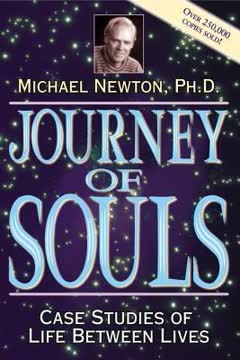
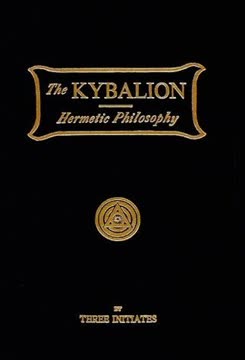
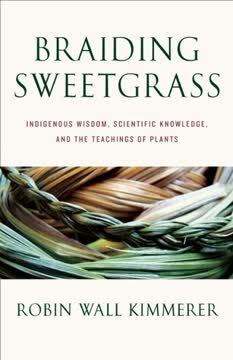
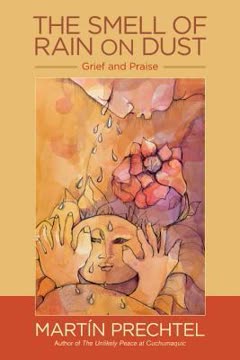
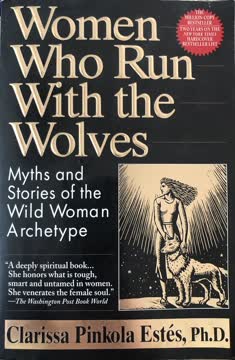
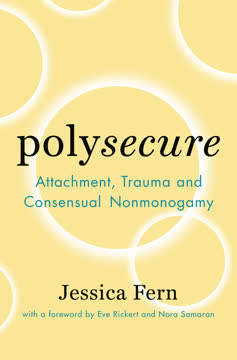
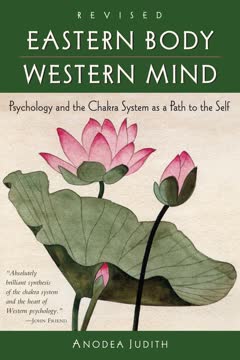
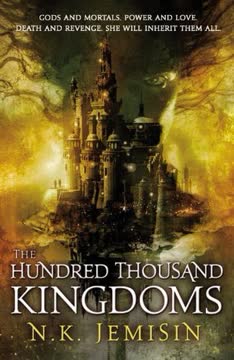
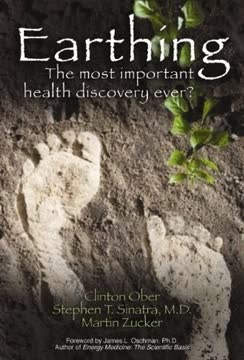
Download PDF
Download EPUB
.epub digital book format is ideal for reading ebooks on phones, tablets, and e-readers.
